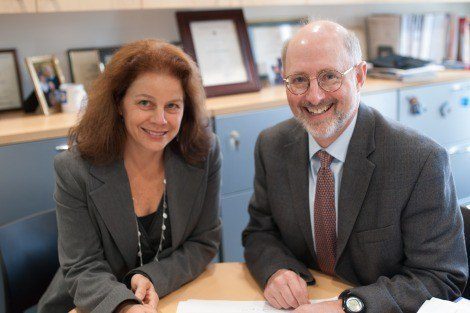October 15, 2013 — In a new study, researchers from Harvard School of Public Health (HSPH) found that newer combination antiretroviral (ARV) drug therapies for HIV appear to protect against puberty delays among children born with HIV.
“We found that youth born with HIV do have a significantly later start to puberty than similar youth without HIV,” said lead author [[Paige Williams]] of the Center for Biostatistics in AIDS Research and senior lecturer on biostatistics at HSPH. “Youth with the most severe HIV symptoms tended to have the greatest puberty delays. Our data also suggested, however, that over the past decade, combination HIV medications may help children with HIV start puberty at a more typical age.” Combination antiretroviral treatments consist of three or more drugs from two or more anti-HIV drug classes and are now standard therapy.
The study was published July 31, 2013 in the journal AIDS. It is believed to be the first to evaluate the impact of combination HIV treatments on puberty onset in youth.
Major funding for this study came from the Eunice Kennedy Shriver National Institute of Child Health and Human Development (NICHD) and the National Institute of Allergy and Infectious Diseases, also part of the National Institutes of Health (NIH). Additional support came from the NIH Office of AIDS Research and seven other NIH institutes: the National Institute on Drug Abuse, the National Institute of Mental Health, the National Institute on Deafness and Other Communication Disorders, the National Heart, Lung, and Blood Institute, the National Institute of Neurological Disorders and Stroke, the National Institute on Alcohol Abuse and Alcoholism, and the National Institute of Dental and Craniofacial Research.
As combination regimens have become more widespread, children’s growth has improved and their physical maturation is much closer to the norm, Williams said. This is especially important because youth with HIV tend to be smaller than uninfected youth and often face mental health problems, she said. “Achieving developmental milestones at a more typical age may help improve self-esteem, reduce risk of depression and other psychosocial problems, and potentially even reduce risk for later fertility problems,” she said.
The researchers tracked 12 years’ worth of data on puberty onset among 2,086 HIV-infected children, age 7 and up, and compared the age at start of puberty to that of 453 children exposed to HIV before or at birth but uninfected. At the time of initial puberty assessment, 64% were on combination ARV therapy and the average time on therapy for this group was over three years. Of the remaining infected children not on combination therapy, 82% were on one- or two-agent therapy, 6% were on three or more, and 12% were not on any ARV treatment. The percentage of infected children on combination treatment increased over time, from 33% to those born before 1990 to 87% for those born since 1996.
The investigators found that HIV-infected girls had an average age of starting puberty of 10.3 years, which was over 6 months later than the mean age of 9.6 years for uninfected girls. Boys with HIV also had delays with an average age of 11.2 years compared to 10.4 years for uninfected boys. Even after accounting for the recent overall trend of earlier puberty among U.S. children and racial and ethnic differences, these differences persisted.
Among youth with HIV, the investigators also found that for each additional year of combination treatment a child received, puberty started about a month earlier. However, this finding did not remain once they accounted for the trend of earlier puberty among U.S. children over the last few decades; the researchers hypothesized that this may have been due to the fact that only the sickest children received combination therapy in the earliest birth cohort, whereas combination treatment was widespread in the later cohorts.
“This study supports the recommended guidelines for initiating combination HIV treatment in youth born with HIV,” Williams said. “Our study findings are also relevant for low-resource settings such as sub-Saharan Africa, where rates of mother-to-child HIV transmission remain high and the majority of children still have severe symptoms of HIV disease before starting treatment, increasing the risk of delayed pubertal onset.”
Most U.S. children are on combination treatment these days, but not all. More research is needed to determine why some are not on it, Williams said. “They may be non-adherent, so their doctors take them off more complicated regimens. Or they may not have good access to care,” she said. “More studies should be done to determine which kids are not getting combination treatment and why.”
“These findings continue to add to the growing evidence that combination antiretroviral therapy has improved the lives of perinatally infected children and adolescents. The challenge moving forward will be to increase adherence to therapy as they transition to adults,” said [[George Seage]], professor of epidemiology, principal investigator, Pediatric HIV/AIDS Cohort Study (PHACS) data and operations center.
Data for the study came from three NIH-supported HIV research networks: The International Maternal, Pediatric, Adolescent AIDS Clinical Trials (IMPAACT) Network, the IMPAACT network’s predecessor, the Pediatric AIDS Clinical Trials Group (PACTG), and the Pediatric HIV/AIDS Cohort Study (PHACS). These three networks are supported by the National Institute of Allergy and Infectious Diseases and NICHD.
Other HSPH researchers who participated in the study included Denise L. Jacobson, senior research scientist in the Department of Biostatistics; [[Kunjal Patel]], research scientist in the Department of Epidemiology, and Jiajia Wang, research analyst. The study also included researchers at six other medical institutions across the nation.
photo: Emily Cuccarese
Learn more
HSPH research pinpoints strategy for monitoring antiretrovirals’ effects on children of HIV-infected mothers (HSPH feature)
